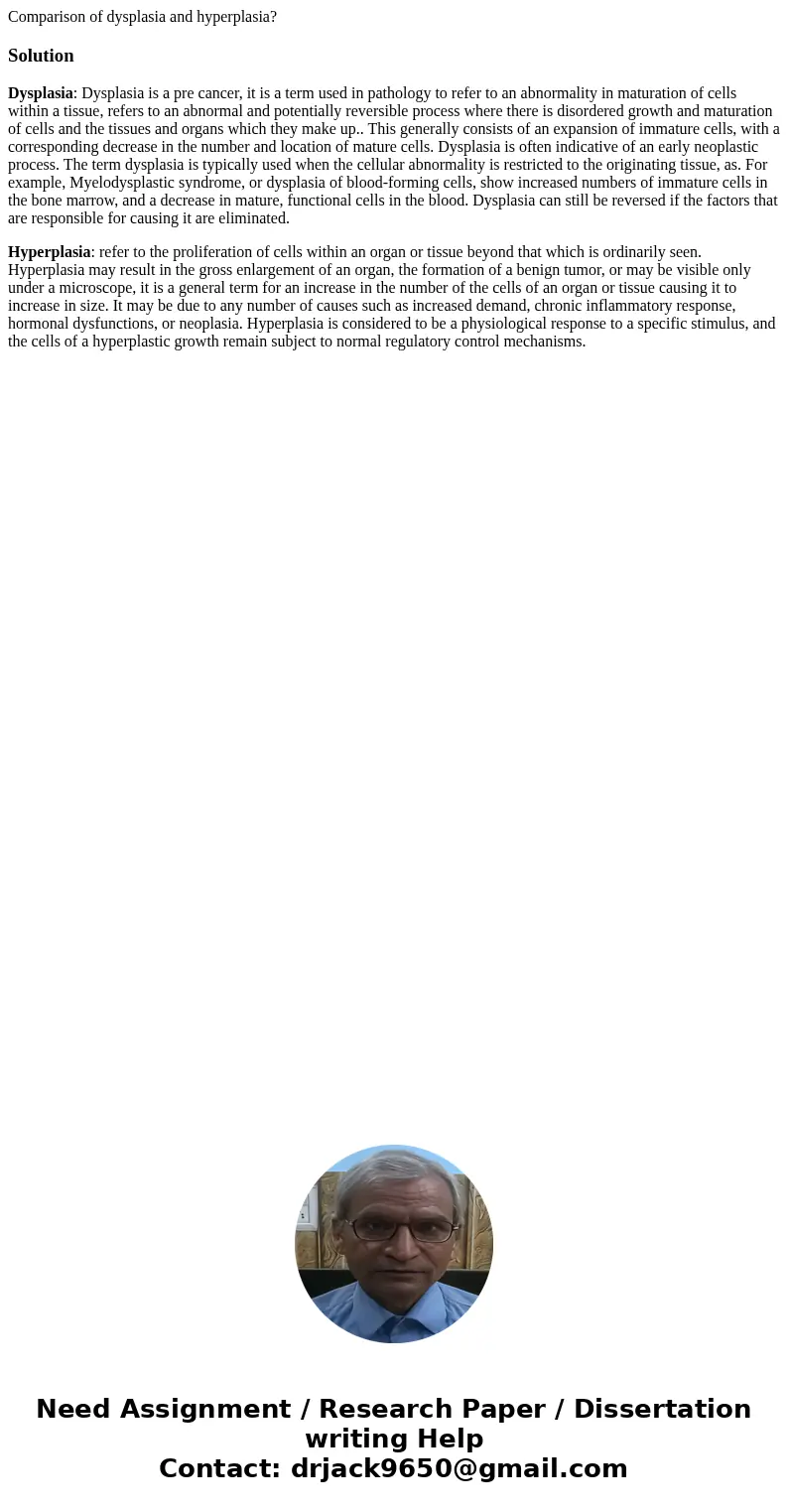Comparison of dysplasia and hyperplasiaSolutionDysplasia Dys
Comparison of dysplasia and hyperplasia?
Solution
Dysplasia: Dysplasia is a pre cancer, it is a term used in pathology to refer to an abnormality in maturation of cells within a tissue, refers to an abnormal and potentially reversible process where there is disordered growth and maturation of cells and the tissues and organs which they make up.. This generally consists of an expansion of immature cells, with a corresponding decrease in the number and location of mature cells. Dysplasia is often indicative of an early neoplastic process. The term dysplasia is typically used when the cellular abnormality is restricted to the originating tissue, as. For example, Myelodysplastic syndrome, or dysplasia of blood-forming cells, show increased numbers of immature cells in the bone marrow, and a decrease in mature, functional cells in the blood. Dysplasia can still be reversed if the factors that are responsible for causing it are eliminated.
Hyperplasia: refer to the proliferation of cells within an organ or tissue beyond that which is ordinarily seen. Hyperplasia may result in the gross enlargement of an organ, the formation of a benign tumor, or may be visible only under a microscope, it is a general term for an increase in the number of the cells of an organ or tissue causing it to increase in size. It may be due to any number of causes such as increased demand, chronic inflammatory response, hormonal dysfunctions, or neoplasia. Hyperplasia is considered to be a physiological response to a specific stimulus, and the cells of a hyperplastic growth remain subject to normal regulatory control mechanisms.

 Homework Sourse
Homework Sourse